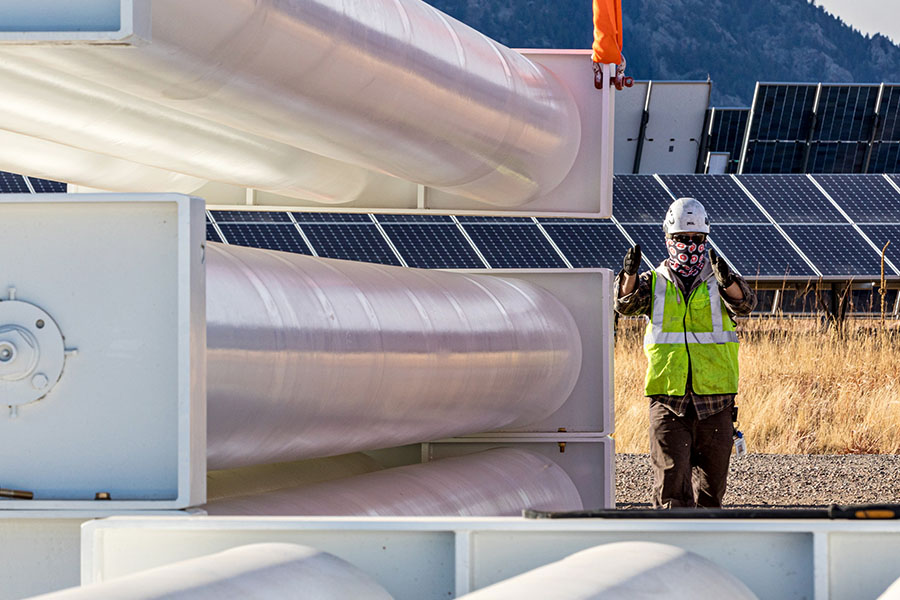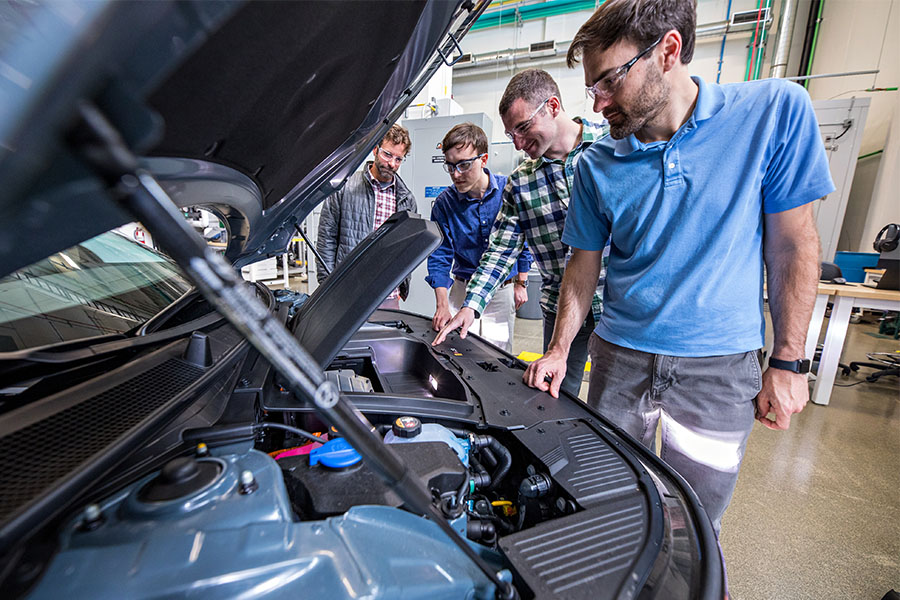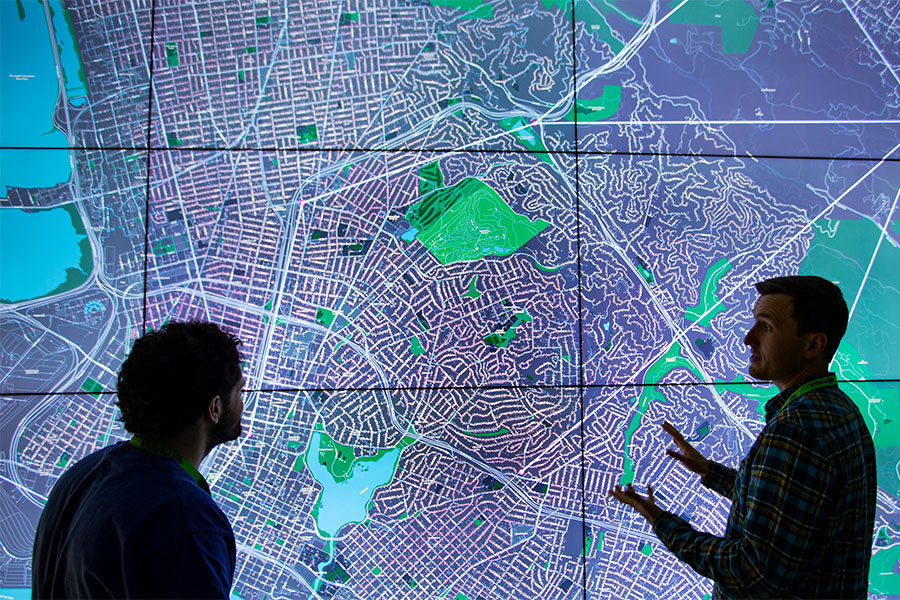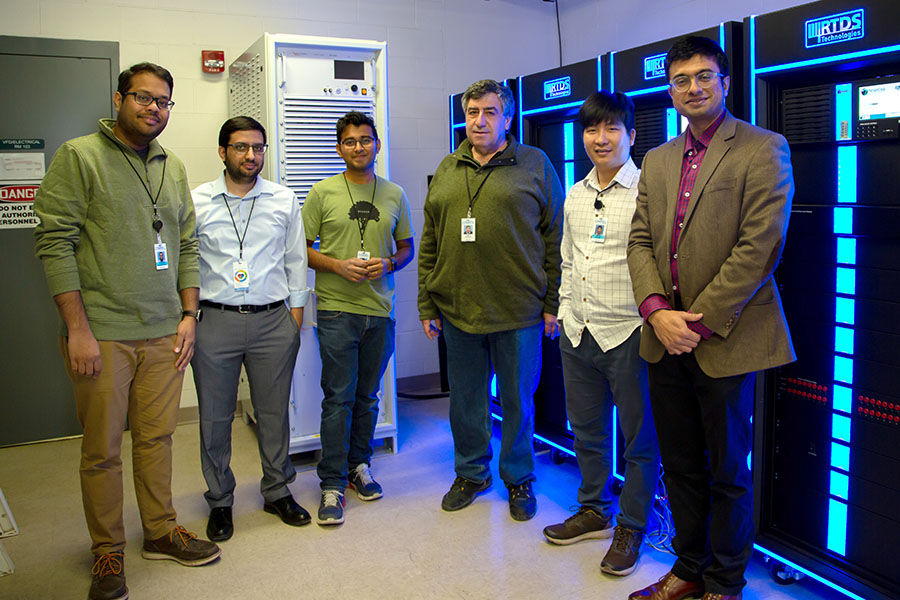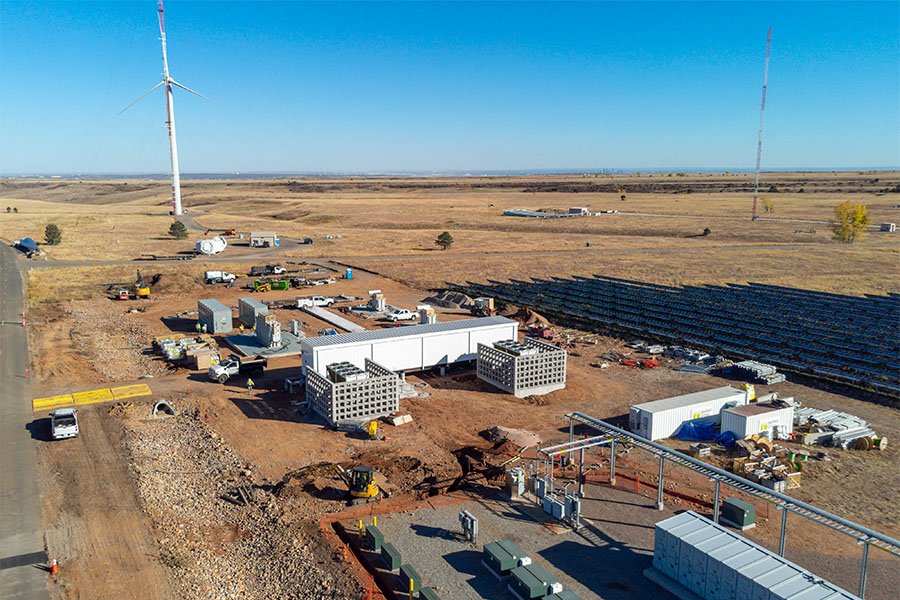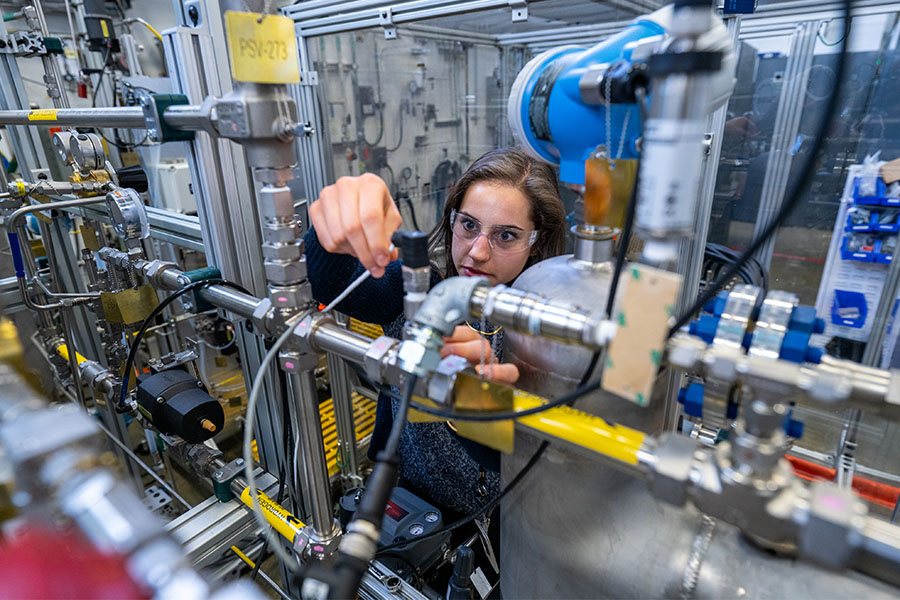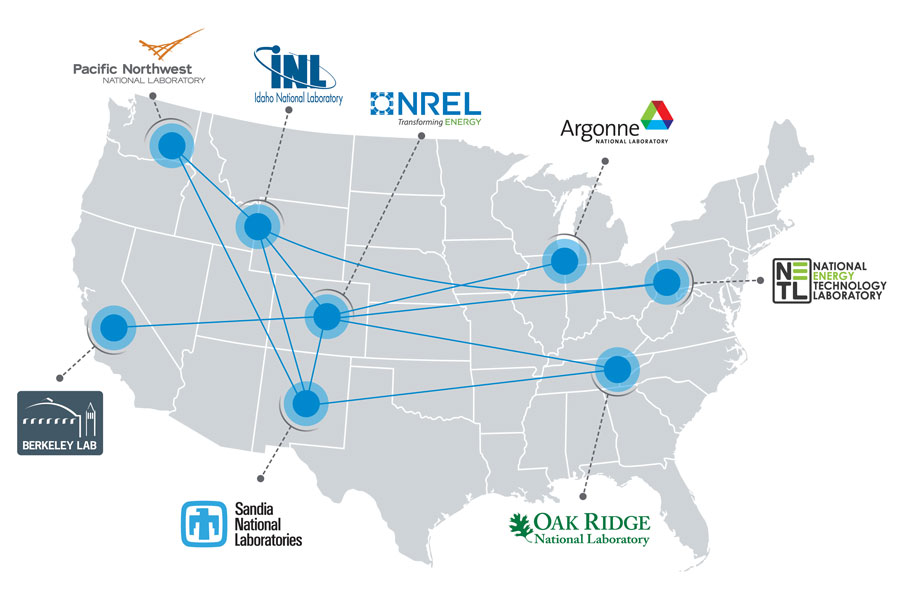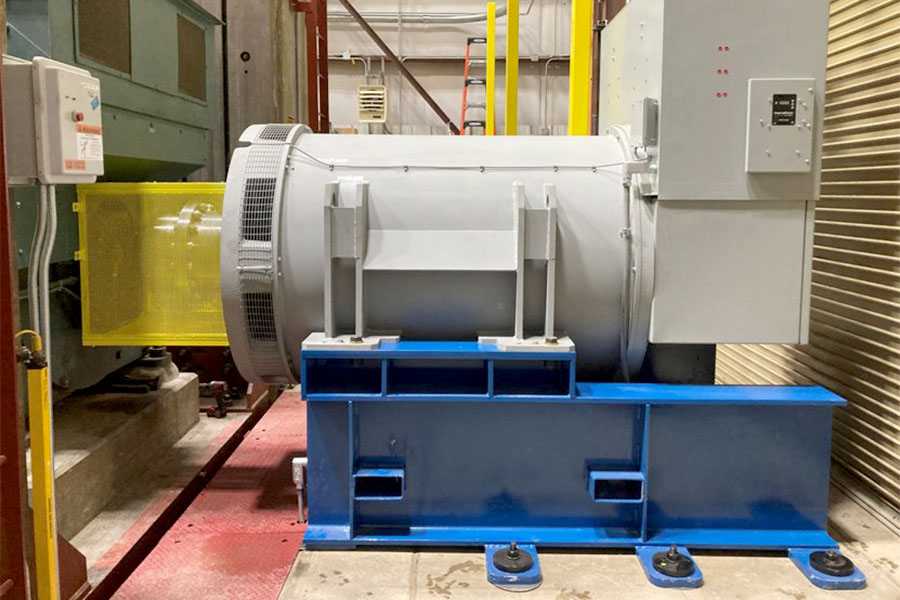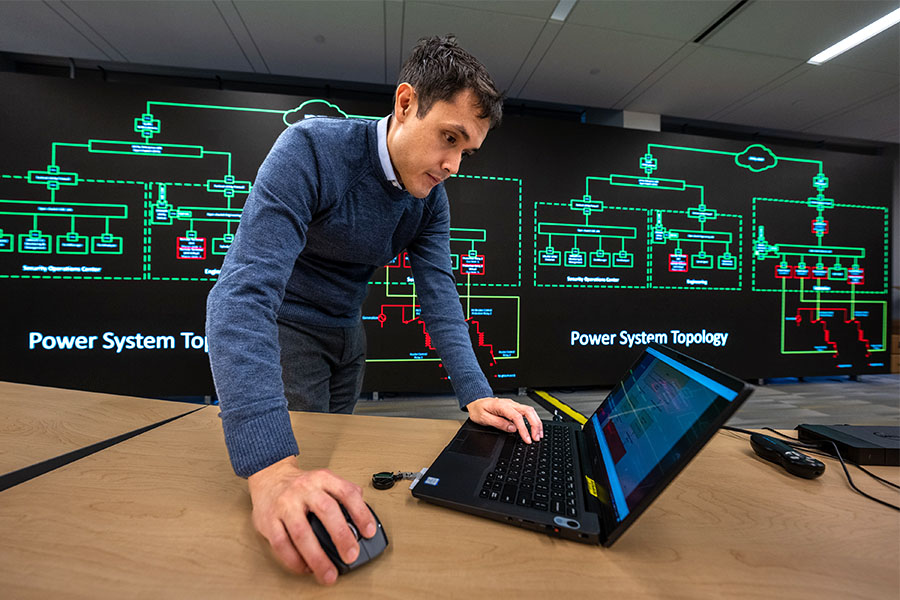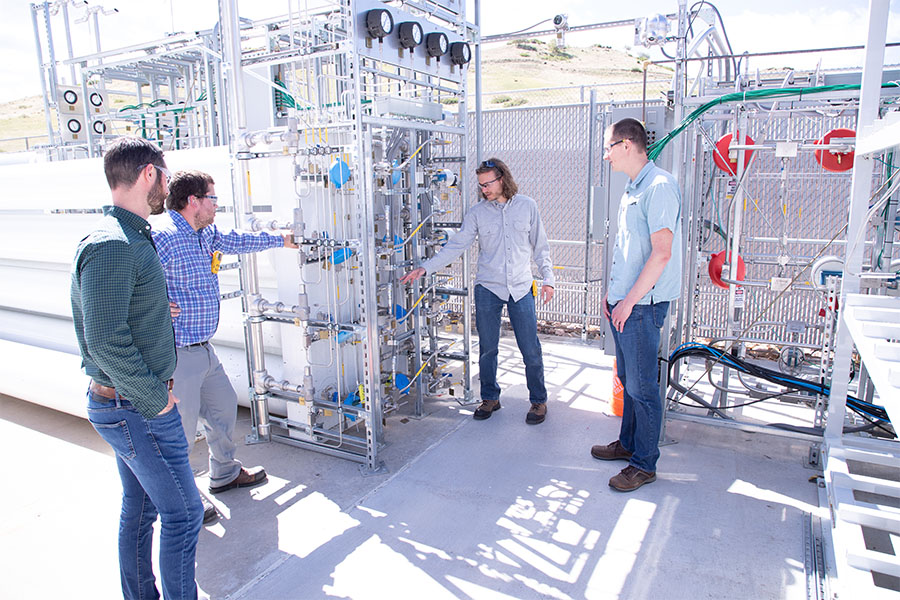Advanced Research on Integrated Energy Systems (ARIES) is the nation's most advanced platform for energy system integration research and validation. It is designed to support and accelerate the nation's transition to a decarbonized electric grid.
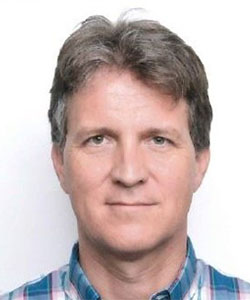
ARIES supports the clean energy goals of the U.S. Department of Energy (DOE) to put the United States on a path to carbon-free electricity by 2035 and economywide, net-zero greenhouse gas emissions by 2050. Learn how ARIES will bring Clean Energy to Communities across the country.
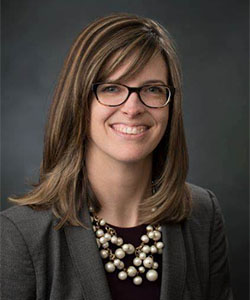
Our Partners: Impact at a Glance
Research Highlights
Cyber Range Accelerates Tech to Market, Starting With Strong Authentication for Distributed Energy Resources
To understand and address security gaps in energy systems, DOE's Offices of Energy Efficiency and Renewable Energy (EERE) and Cybersecurity, Energy Security, and Emergency Response (CESER); sponsoring utilities Berkshire Hathaway Energy, Duke Energy, and Xcel Energy; and NREL launched the Clean Energy Cybersecurity Accelerator—a technology accelerator program to build cybersecurity into renewable energy technologies to stay ahead of evolving threats. The accelerator's first cohort—which includes Blue Ridge Networks, Sierra Nevada Corp., and Xage Security—is validating its proposed solutions in the ARIES cyber range, which provides a safe, emulated environment to evaluate cybersecurity innovations without putting customers or utility networks at risk.
Read more about the first cohort members.
Sponsors: EERE, CESER
Microgrid in Cordova, Alaska, Is Model for Resilient, Local Energy
The city of Cordova, Alaska, is enhancing the resilience of its microgrid with support from DOE's Grid Modernization Lab Consortium—including Idaho National Laboratory, Sandia National Laboratories, and Pacific Northwest National Laboratory—and nine industry partners. The resilience-enhancing technologies include new energy storage; new controls for its hydropower resources; and a fleet of meters, sensors, and advanced zonal controls using smart metering infrastructure to manage recovery, improve resilience, and support the city's fishing economy by serving seasonal and critical loads. Using ARIES, Cordova validated its improved microgrid against plausible events, such as power loss from an earthquake or avalanche, allowing the local electric cooperative to observe and control the network with more precision. This is important for Cordova and indigenous communities throughout Alaska because microgrids are their last resort for energy, and controls make it easier to adapt during critical events.
Sponsors: Grid Modernization Initiative; City of Cordova, Alaska
U.S. Collaboration With India Uses ARIES To Redesign Power Distribution
ARIES is a key part of a joint U.S.-India project because it serves as a research platform for new designs of renewable power distribution systems. The project involves more than 30 research and industry organizations across India and the United States. The goal of the partnership is to make it easier for people in both countries and around the world to use renewable energy, storage, and smart grid technologies for remote and islanded communities. The NREL project team built a microgrid capability within ARIES to see how easy it would be for remote communities to use standardized and stable grid designs.
Read more about this joint U.S-India project.
Sponsors: EERE, Indian Ministry of Science and Technology, Washington State University

ARIES Project Achieves a First-of-Its-Kind Milestone for Heavy-Duty Hydrogen Truck Refuel
A collaboration led by DOE's Hydrogen and Fuel Cell Technologies Office reached a major milestone for hydrogen fueling: The team filled a semitruck-sized tank in under 10 minutes, which rivals conventional fuel times for diesel big rigs and is a 10-times improvement over current hydrogen fueling. NREL also worked with industry partners Air Liquide, Honda, Shell, and Toyota. This achievement will propel hydrogen forward by allowing industry to collaborate to develop fast-fueling protocols, safety codes, and hardware devices.
Read more on this major hydrogen fueling milestone.
Sponsor: HFTO

Common Type of Wind Turbine Can Form the Grid—A Breakthrough for 100% Clean Energy
Type-3 wind turbines, one of the most-used wind technologies, can now supply baseline power to the grid without requiring fossil-fueled or other resources to set grid stability. Demonstrations with GE at ARIES showed that the wind turbine can provide the sort of fundamental power necessary to anchor the grid around stable frequencies and voltages. This makes it possible for wind turbines alone to form a grid, such as when disconnected from the larger grid or in high-renewable energy systems. This also opens new value streams for wind energy participating in power systems.
Read more about this wind energy breakthrough.
Sponsor: WETO
NextGen Charging Profiles Minimize Grid Impacts, Cut Charging Costs
NREL is studying how environmental, grid, and vehicle conditions affect the performance of electric vehicles (EVs) and EV supply equipment. This research will minimize grid impacts and charging costs while providing new strategies for charging and energy storage integration. The evaluation data are allowing researchers to better emulate EV charging, which will lead to improvements for EVs, chargers, and charging control systems. Project results will help industry, partners, and stakeholders make critical grid-planning decisions.
Sponsor: VTO
ARIES Adds Hydrogen to Hybrid Power Plant To Study Flexible Generation
Using ARIES, NREL and more than a dozen partners are exploring how renewable power plants can operate as a flexible energy source when paired with energy storage from hydrogen. The FlexPower project brings NREL together with other national laboratories (Idaho National Laboratory and Sandia National Laboratories) to develop a hybrid generation power plant enhanced with energy storage at NREL's Flatirons Campus. This electrons-to-molecules scheme is being evaluated in a Grid Modernization Initiative-funded project that will reduce costs via standardization and through the possibility of scaling up electrolyzer integration. Such hybrid power plants will accelerate the adoption of variable renewable energy and hydrogen storage by proving new value streams for these resources.
Read more about how the research will help smooth the transition to clean energy.
Sponsor: DOE's Grid Modernization Lab Consortium, funded in part by WETO, HFTO, WPTO, and OE
High-Power Charging Standard Will Extend Electrification Across Transportation Sector
Electric vehicle industry experts and scientists at NREL are working on a new high-power charging standard, Megawatt Charging System, that will push electrification beyond passenger cars. To ensure the new standard is compatible across charging station and truck manufacturers, DOE, the California Energy Commission, and the Charging Interface Initiative (CharIN) have hosted evaluations of high-power charging connectors at NREL. These evaluation events convene manufacturers in a neutral, collaborative environment to validate their designs, discuss their approaches, and reach consensus. This helps the electric vehicle industry to quickly and safely adopt new technologies.
Sponsor: VTO
Grid Restoration Is Possible With 100% Renewables, as Shown in Small-Scale NREL Demonstration
NREL engineers designed a research platform with 40 Siemens inverters to show how renewable energy devices can provide resilience by recovering electricity following an outage. The platform is a small version of a realistic system—solar, battery, and wind power all connected on a distribution network—and part of a project named AURORA. This project, led by Siemens with partners Colombia University and Holy Cross Energy, can derisk new controls for integrating more renewable energy and providing resilience.
Sponsor: SETO
Digital Twin Will Demonstrate Resilient Microgrid Controls Before Deployment
NREL and partners are developing an advanced control architecture to improve microgrid resilience and reduce downtime after disturbances. Microgrids are key factors in strengthening grid resilience because they can disconnect from the traditional grid to operate autonomously and function as a grid resource for faster system response and recovery. With ARIES assets, the team will evaluate a new control architecture by connecting a physical microgrid to power system simulations. This unique digital twin approach replicates challenges faced by utilities managing microgrids, helping them evaluate and improve their resilience strategies and deal with increasingly extreme events. Partners include utilities, industry, universities, and a state government collaborating toward a workable architecture and example for community-scale microgrids.
Sponsor: SETO
Rapid and Robust Grid Recoveries Become Possible With Intelligent Algorithms
An NREL-supported Advanced Research Projects Agency-Energy (ARPA-E) project could fundamentally change how large grid outages are managed by demonstrating recoveries for critical infrastructure. Using algorithms built by the University of Minnesota and NREL, this new method identifies resources that can rapidly energize and sustain the grid for long periods of time. The multiple partners on this project will soon validate their "rapidly viable grid" design on ARIES assets, showing that the method works in a replica grid environment and preparing it for adoption where resilience is most needed on real energy systems.
Sponsor: ARPA–e
Lab Capabilities and Buildouts
Engagement and Outreach

The first in-person UNIFI workshop, where more than 80 participants discussed plans for grid-forming inverters, took place at NREL July 21–22.
ARIES is engaging with communities, industry leaders, and academic partners to ensure its research and capabilities meet real-world needs. Fiscal Year 2022 engagement and outreach activities included:
- Hosting and introducing ARIES capabilities to U.S. government leaders and dignitaries from around the world
- Meeting and consulting with the External Advisory Board, made up of 14 members with utility, industry, academic, and governmental perspectives
- Presenting ARIES capabilities at energy conferences and regional and community events
- Soliciting an ARIES Advanced Distribution Management System Test Bed user call, which brought in four new partners for two projects to evaluate leading-edge management solutions for the electrical grid
- Connecting research capabilities and assets with other national laboratories
- Engaging communities to support their energy transition strategies.
ARIES added 22 new partners and 28 new projects to its non-DOE partner portfolio.
Most Downloaded ARIES Publications
-
Electrification of Aircraft: Challenges, Barriers, and Potential Impacts
NREL Technical Report (2021) -
Photovoltaic Plant and Battery Energy Storage System Integration at NREL's Flatirons Campus
NREL Technical Report (2022) -
A Roadmap Toward Sustainable Aviation Ecosystem
NREL Technical Report (2022)
Looking Ahead
"How will our energy system change?" This question resounds for systems large and small, simple and complex. It's new terrain for everyone, but many companies, communities, and energy leaders are now finding their footing with ARIES. The research capabilities here can prepare us for power systems of the future by emulating the world outside, and upcoming partnerships will show what is really possible with ARIES.
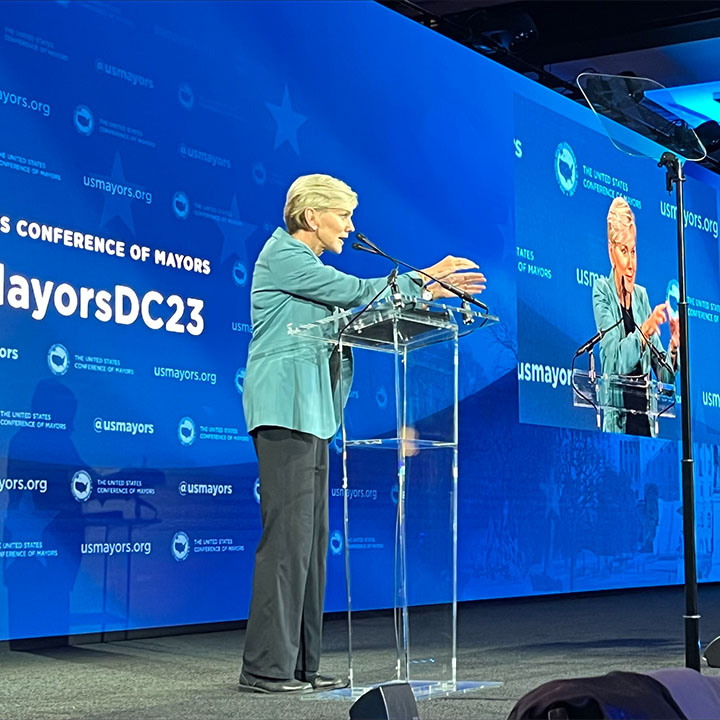
National
ARIES will be the proving ground for concepts that can transform community energy systems. On Jan. 18, 2023, Secretary Granholm launched DOE’s Clean Energy to Communities (C2C) program at the Conference of Mayors. C2C will provide up to $50 million in funding to help local governments, utilities, and community-based organizations achieve their clean energy goals. Participants in C2C will use ARIES to leap from idea to implementation in their respective energy transitions.
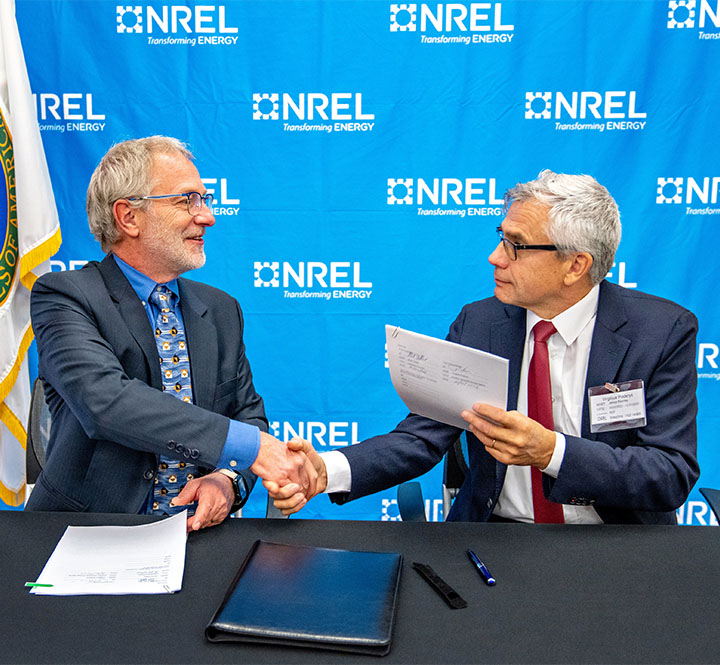
International
The country of Lithuania is transitioning to 100% renewable energy, and to achieve this extraordinary goal, the government will use ARIES—the only platform able to integrate and validate all of its options for clean, safe, and equitable energy.
Similarly, utilities are relying on ARIES to deploy upcoming technologies—first on a risk-free replica grid with ARIES and then live. The Israel Electric Corp. is one example. The utility is collaborating with NREL to improve its power restoration and fault identification approach.
This is where energy alternatives come to life. The bold strategies being pursued by partners are within reach because of ARIES, where experiments are unconstrained by limits on power or computation and can push as far ahead as technology permits. With so many options to transform energy around the world, we look forward to what's ahead with ARIES.
NREL works with organizations—large and small—to expand the clean energy economy. You can partner with ARIES to accelerate renewable energy and energy-efficient solutions into practical applications. Watch for opportunities to work with us on the ARIES web page, or email us at ARIES@nrel.gov to discuss your project.
Advisory Committees
ARIES Steering Committee
The ARIES Steering Committee comprises EERE and NREL executive leadership. This committee meets quarterly and has oversight of and responsibility for ARIES research and development management, research impact, and financial and business practices.
Alejandro Moreno
Acting Principal Deputy Assistant Secretary, EERE
Michael Berube
Deputy Assistant Secretary, Sustainable Transportation
Kevin Lynn
ARIES Lead and Director of Grid Modernization
Derek Passarelli
Director, Golden Field Office
Carolyn Snyder
Deputy Assistant Secretary for Energy Efficiency
ARIES External Advisory Board
The ARIES External Advisory Board provides an external perspective from industry, academia, and other government agencies and programs to NREL, DOE, and EERE on the research direction, RD&D gaps, and development and deployment of the ARIES research platform.
Chair: Gary Smyth
Executive Director, Global R&D Laboratories
General Motors (retired)
Jeffrey Baumgartner
Vice President, Security and Resilience
Berkshire Hathaway Energy
Colton Ching
Senior Vice President, Planning and Technology
Hawaiian Electric Co.
Lauren Faber O'Connor
Chief Sustainability Officer
City of Los Angeles
Paula R. Glover
President
Alliance to Save Energy
Christopher Herbst
Vice President, Strategic Partnerships and Innovation
Eaton
Robert Horton
Vice President, Environmental Affairs and Sustainability
DFW Airport
Alice K. Jackson
Senior Vice President, System Strategy, and Chief Planning Officer
Xcel
Danielle W. Merfeld
Vice President and Chief Technology Officer
GE Renewable Energy
Teresa R. Pohlman
Director, Sustainability and Environmental Programs
U.S. Department of Homeland Security
Ronald M. Sega
Chief Technology Officer
U.S. Army Futures Command
Emma Stewart
Chief Scientist
National Rural Electric Cooperative Association
Timothy D. Unruh
Executive Director
National Association of Energy Service Cos.
Evan Wolff
Partner
Crowell and Moring LLP
NREL ARIES Team
Peter Green
Deputy Laboratory Director, Science and Technology
Johney Green
Associate Laboratory Director
Juan Torres
Associate Laboratory Director
Jennifer Kurtz
ARIES Research Director and Center Director
Jerry Davis
ESIF and ARIES Laboratory Program Manager
Jennifer Palmer
ARIES Research Advisor and Technical Coordinator
Rob Hovsapian, Matt Thornton, Ben Kroposki, Keith Wipke, Daniel Laird, Jennifer King, Steve Hammond, Murali Baggu, Vahan Gevorgian, Robb Wallen, Emanuel Mendiola, Przemyslaw Koralewicz, John Farrell, Andrew Meintz, Barry Mather, Jon White, Chad Blake, Panos Datkos, Greg Martin, Steve Nixon, Bridget Ford, Kim Van Becelaere, Mackenzie Reed, Jill Coughlin, and Anna Garcia
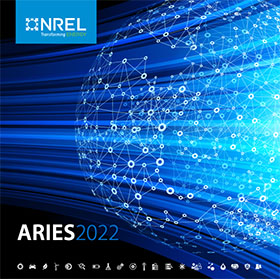
Share
